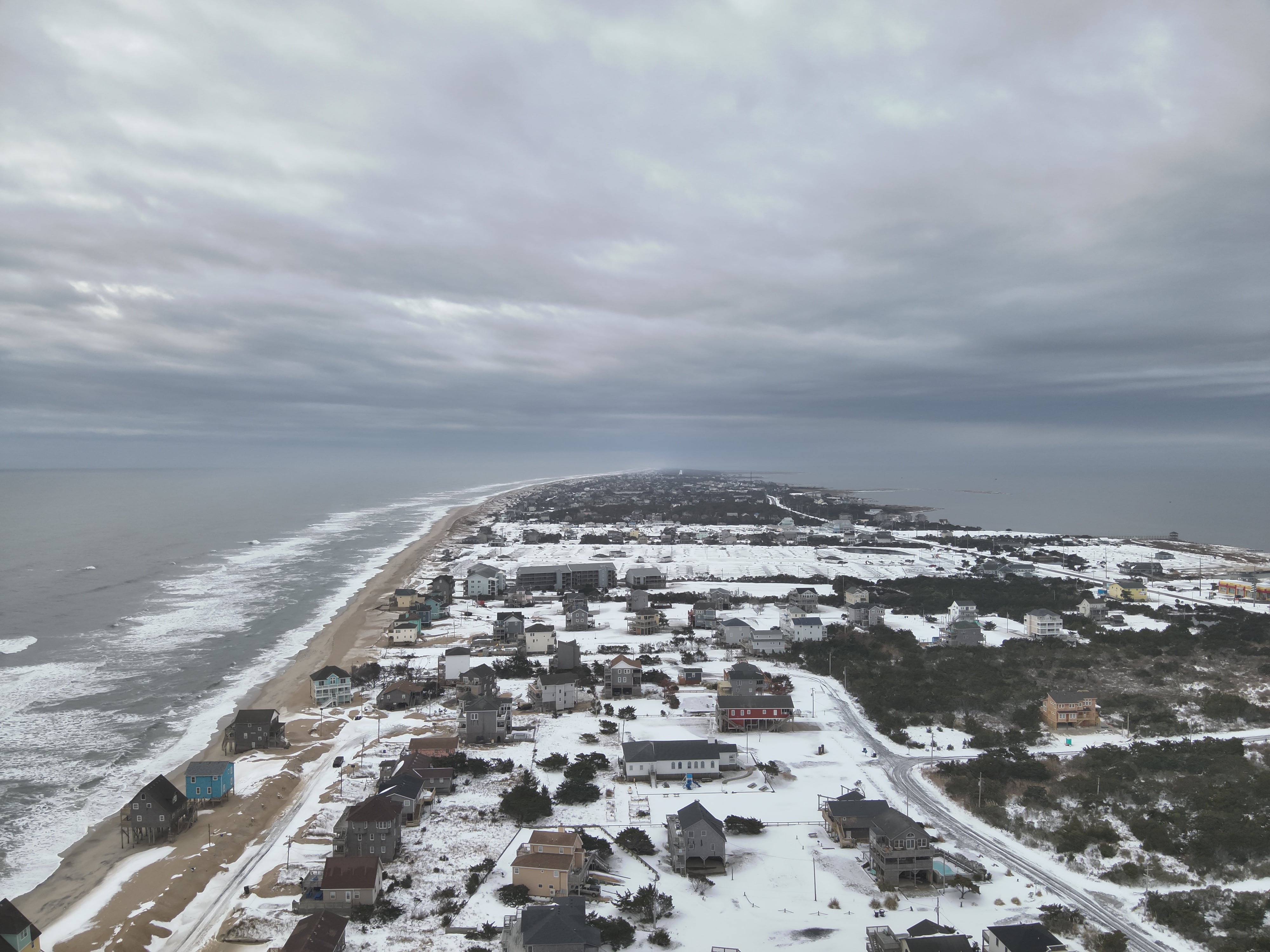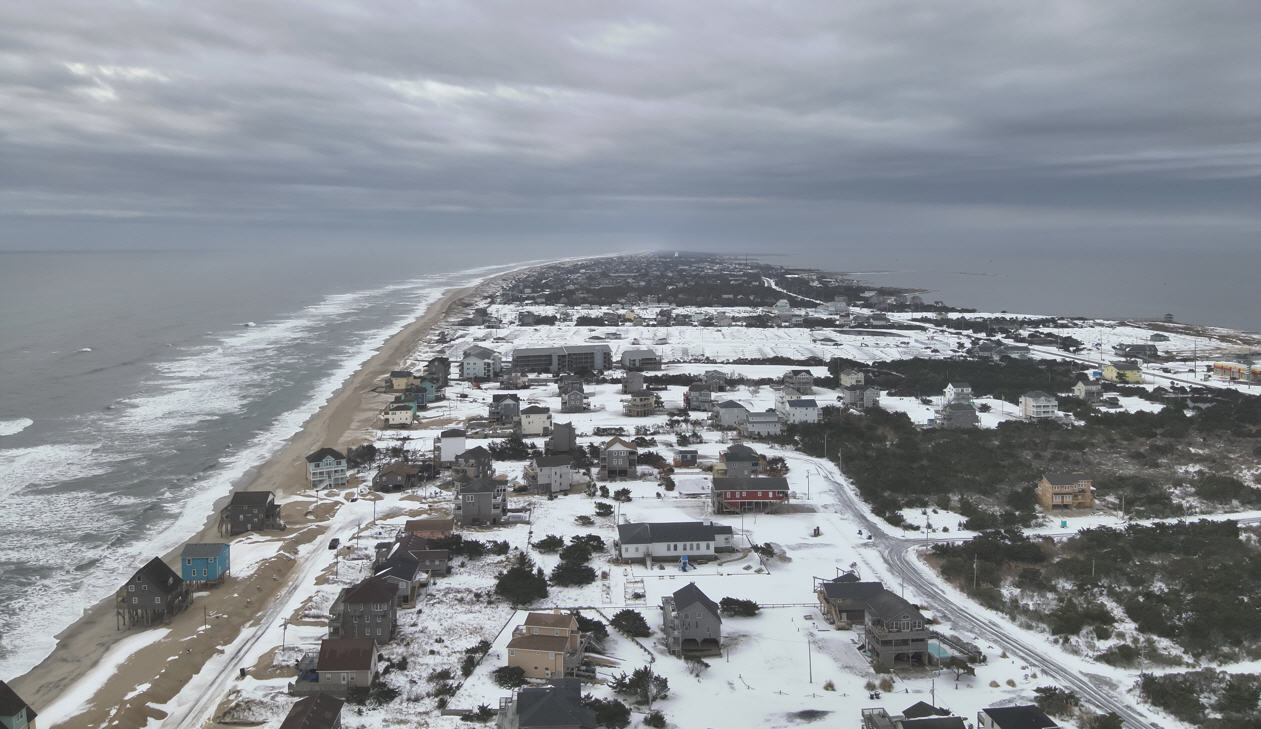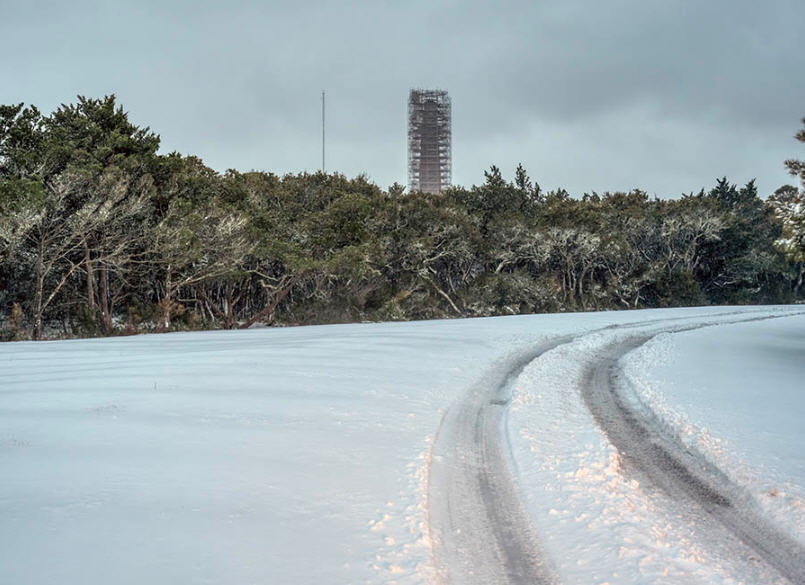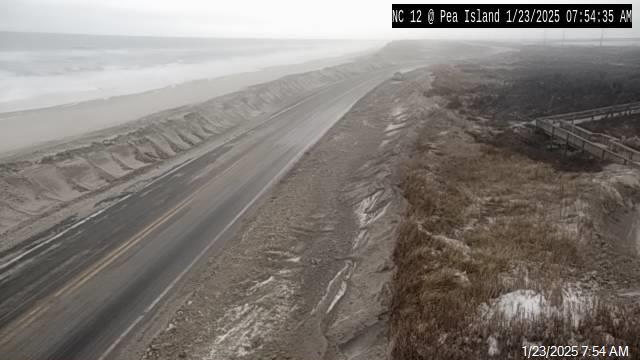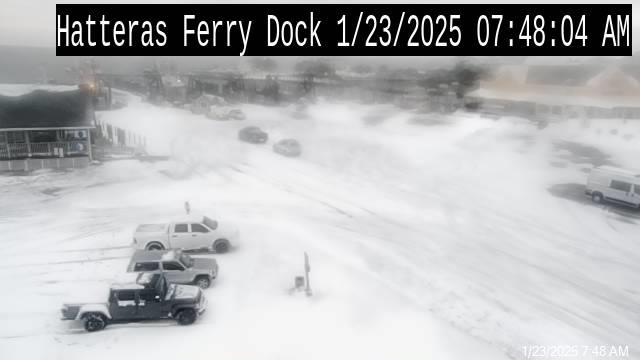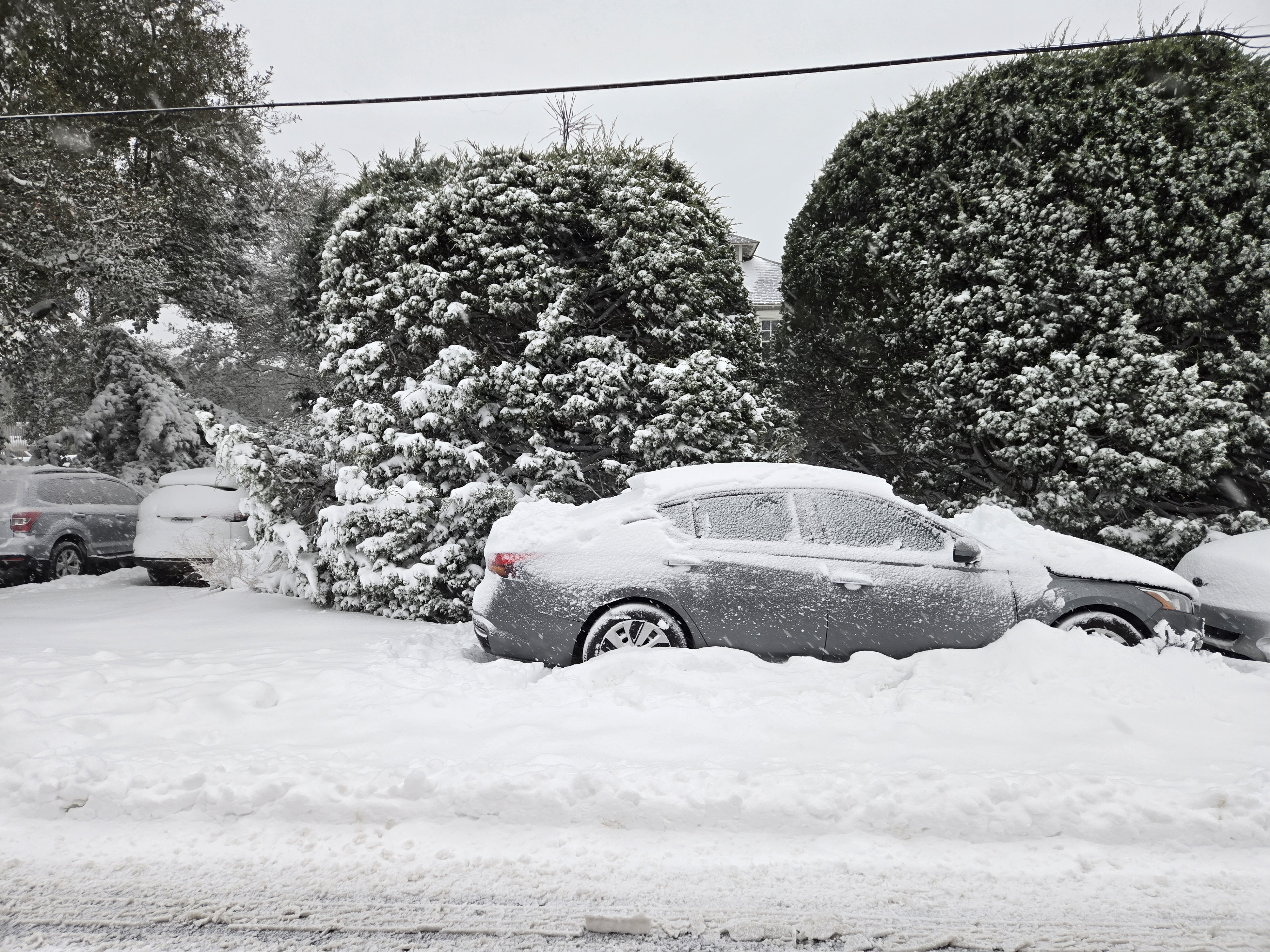Unimaginative meteorologists called it “The Great Atlantic Coast Storm of 1962.” The late Aycock Brown, though, was a more lyrical sort. As the longtime publicist for Dare County, Brown had a flair for turning a phrase. He was also a religious man. Brown looked at the calendar and noted that the great storm had hit on the first Wednesday of Lent. Thus, he christened it with the name that has come down through history, The Ash Wednesday Storm.
It arrived 50 years ago this week. For three days, it lashed almost 500 miles of the Eastern Seaboard, from the Outer Banks to Cape Cod, with unremitting winds that topped 70 miles an hour. It hurled 30-foot waves against sand dunes and beach towns, cutting new inlets, flooding roads and collapsing buildings. Atlantic City’s famous steel pier crumpled under the onslaught; Ocean City’s boardwalk splintered. Assateague Island in Maryland was so inundated that plans to develop the island were scrapped, and it later became a national park.
Nor’easters don’t generally kill, but when this one was done, 40 people were dead. The price tag for the damage was later estimated at $500 million in current dollars. The U.S. Geological Survey considers it to be one of the 10 worst storms in the United States in the 20th century.
Though no one died in North Carolina, the northern Outer Banks were staggered by the blow. Sixty buildings were destroyed outright. More than 1,300 others were heavily damaged. A new inlet flowed near Buxton, cutting off southern Hatteras Island.
“It was total devastation,” remembers Wayne Gray, a freshman at N.C. State University at the time who went home to Nags Heads the weekend after the storm to help with the clean-up. “It looked like a tidal wave had hit.”
The Ash Wednesday Storm and Hurricane Hazel in 1951 remain the yardsticks against which other coastal storms in the state are measured.
It came with no warning on the moonless night of March 7. This was before the days of all-seeing satellites and clever computer models. “We didn’t have the modern technologies we have today,” noted Stockton “Stocky” Midgett, 84. “The weather on the radio was all local.”
But there were signs of trouble. A brisk northeast wind had been blowing for a couple of days. Small craft warnings were up north of Hatteras. The Weather Bureau issued a gale warning for Tuesday night.
Inland, a blizzard had blanketed much of North Carolina with snow. North, in the Shenandoah Valley, as much as 23 inches covered the ground.
Yet, there was no hint of what was to come in the Wednesday morning newspapers. Gary Powers dominated the front pages. The U2 spy pilot who had been captured and later released by the Russians had testified Tuesday before a Senate committee. The morning newspaper in Norfolk offered encouraging news that no significant snow was expected in the Tidewater. By the time its carriers tried to deliver the paper to the Outer Banks, though, the flooding was so severe that they couldn’t get through.
The storm struck at the worst possible time. The moon was closest to the Earth, and the sun and the moon were aligned. These astronomical conditions produced the feared perigean spring tides that only occur every two years. The storm would continue through five cycles of maximum high tides.
David Stick, then the chairman of the Dare County Board of Commissioners, quickly found out what that meant. The late historian and author, who would write the definitive book on the storm, left his home on Colington Island before noon Wednesday with his three sons, heading to Kitty Hawk School, the county’s disaster control center. No stranger to driving on sand or through low water, Stick pressed forward in his Jeep station wagon. In Kill Devil Hills, near the Avalon Beach bypass, his car drowned out.
“The stupidest thing I ever did,” Stick told an interviewer in 2008. “It (the Jeep) was a box, and it was rocking back and forth. The water came up in the car and we watched a cottage over by the ocean disintegrate and then the various parts came by us on both sides, though fortunately none hit us.”
After an hour of terror, a friend pulled Stick’s vehicle to safety and he continued on to the school, and “from then on I didn’t leave that school for about two or three days,” he said.
Cut Off in Buxton
Carol Dillon remembers how hard the wind was blowing and how loud the ocean roared that Wednesday morning. She and her family lived in their motel in Buxton. She took comfort in the wide beach that fronted the village.
“I remember looking out the window and seeing this wave come down the road and into the parking lot,” she said. “It was the first time we ever had water in the parking lot.”
Dillon would find out later about the “Gem.” The 501-foot Liberian tanker was taking on water as she struggled through heavy seas near Ocracoke. She would break in half that night, killing one aboard.
Neither did Dillon know that morning that she and her neighbors were cut off from the rest of the world. Storm waves had pushed through Hatteras Island, creating a new inlet between Buxton and Avon.
“We were isolated for days,” Dillon said. “They had to bring in food by ferry.”
Midgett nearly became the storm’s only casualty in North Carolina when he and others tried to cross the new inlet in a friend’s small dory. “I like to got drowned in the new inlet that was cut,” he said. “The current was running through so strong that it nearly threw me overboard. They had to grab me by my legs to save me.”
Midgett and his late brothers ran a bus line from Hatteras to Manteo. “I was driving that bus when I was 10 years old,” he said. “I had to sit on a pillow and look through the driving wheel.”
Having a bus also meant having a garage to store and work on the buses. Garages naturally become the final resting places for old cars, many of which found another life as inlet fill. “We put a bunch of old cars in that inlet to try and fill her up,” Midgett said. “Everybody who had old cars dumped them in the inlet.”
They didn’t work, Dillon said. Neither did the old drums dumped into the break. The inlet was briefly bridged and finally filled by two dredges.
Heroes Aplenty
No one died on the Banks that day because of the heroism of many. Stick’s book The Ash Wednesday Storm recounts many acts of valor that undoubtedly saved many lives. In Nags Head, Ephey Priest rescued so many people from flooded houses with his road grader that no one ever knew the exact number. Men in Kill Devil Hills repeatedly launched little skiffs into the tempest, checking house after house and rescuing all they found. They would return home, change into dry clothes and go out again.
In Kitty Hawk, Sam Beacham and Bill Quidley attached a small outboard motor to a skiff that had washed up on the U.S. 158 Bypass. They plucked people waving from the rooftops of houses or stranded in flooded cars. Quidley, a Specialist 5 in the Army, was later awarded the Army Commendation Medal for his heroism.
Far from his home in Kitty Hawk that day, Coast Guardsman Gary Perry was on the deck of his ship in Guantanamo Bay. A radioman came topside.
“You Perry?” he asked.
Perry confirmed that he was.
“You’re from the Outer Banks?” the radioman inquired.
Yes, again, said Perry,
“They ain’t there no more,” the man said.
It would be three weeks before Perry, now the mayor pro temp of Kitty Hawk, returned to Norfolk to learn that the Banks had survived. But it was a near thing.
(Frank Tursi is the author of three books and a 30-year newspaper veteran, who is now an assistant director at the N.C. Coastal Federation and the editor of Coastal Review Online. Before joining the federation in 2002, Frank was the senior environmental reporter in North Carolina. His writing has won numerous state and national awards. An avid fisherman and model boat builder, he lives in Swansboro with his wife, Doris. This story is provided courtesy of Coastal Review Online, the coastal news and features service of the N.C. Coastal Federation. You can read other stories about the N.C. coast at www.nccoast.org.)










